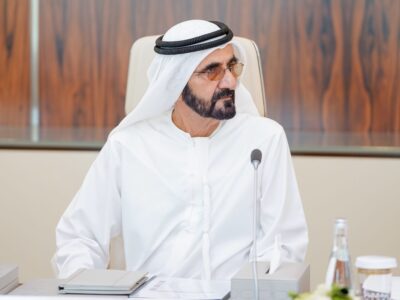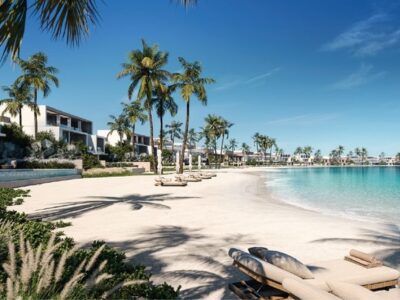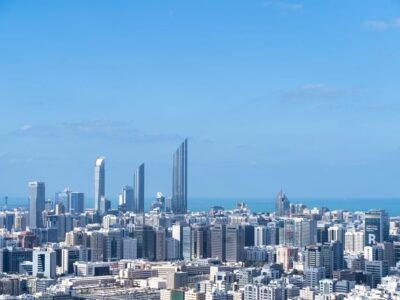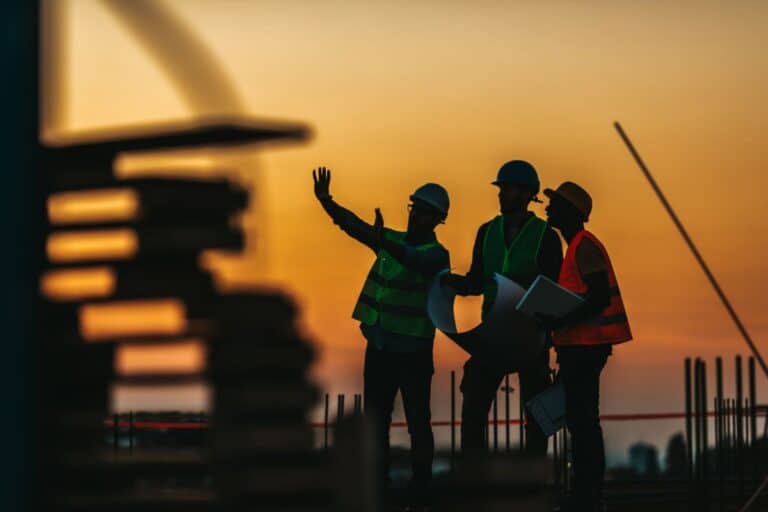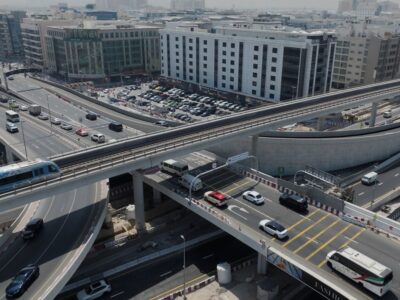The UAE‘s construction industry is set to reach $130.8 billion by 2029, according to the 2025 UAE Construction Landscape Review from Knight Frank.
Construction output across the UAE has increased since the start of the decade. After reaching a record $107.2 billion in 2024, forecasts show growth will continue at 4 per cent per annum through to 2029.
Construction accounts for 62 per cent of future pipeline projects across the UAE, ahead of transport (12 per cent), power (7 per cent) and water (5 per cent).
Mixed-use projects lead UAE construction pipeline at 42% share
Mixed-use projects make up 42 per cent of the construction pipeline, followed by residential real estate (28 per cent), data centres (9 per cent) and hospitality projects (4 per cent).
Residential construction costs in Q2 2025 ranged from AED 4,200 per sqm for standard villas to AED 11,000 per sqm for high-end villas.
Apartments ranged from AED 4,300 per sqm to AED 9,500 per sqm. Commercial buildings cost between AED 5,500-7,300 per sqm at the end of H1 2025.
“The UAE construction industry is in a period of robust growth and transformation, driven by economic diversification, tourism and strategic infrastructure investments, particularly in housing, transport and smart cities. The sector is a key pillar in the ‘We the UAE’ 2031 vision, the D33 Economic Agenda, Dubai’s 2040 Urban Masterplan and Abu Dhabi’s Vision 2030. Abu Dhabi and Dubai dominate the UAE market, accounting for 85 per cent of the total value of contracts awarded between 2020 and August 2025 – US$ 151bn in Abu Dhabi and US$ 129.9bn in Dubai,” Faisal Durrani, Partner – Head of Research, MENA said.
Abu Dhabi and Dubai account for 85 per cent of the total value of contracts awarded between 2020 and August 2025 – $151 billion in Abu Dhabi and $129.9 billion in Dubai.
In Dubai, construction accounts for 75 per cent of project activity. This contrasts with Abu Dhabi, where construction represents 23 per cent of contract awards, behind oil and gas projects (40 per cent). Oil and gas sectors make up only 3 per cent of contract awards in Dubai.
Dubai has been the world’s number one recipient of FDI into greenfield projects for three years running.
The UAE retained its position as the world’s number one recipient of FDI, relative to the size of its economy, for the second year running.
Projects in Dubai include the Palm Jebel Ali, The Oasis by Emaar, Marsa Al Arab, Therme Dubai, Naia Island, Venice at DAMAC Lagoons and Parkwood and Address Residences in Dubai Hills Estate. Dubai is expanding its Metro system by 15km by 2029 with construction of the Blue Line.
“Continuous strategic economic development is reshaping Dubai’s commercial real estate landscape and the latest construction output figures reflect the strong fundamentals of the market. Under the Dubai Urban Masterplan, the city’s population is forecast to grow from 3.4 million in 2020 to 5.8 million by 2040, underpinning the residential sector’s expansion. In addition, around 8.2 million sqft of office space is under construction and is due to be delivered by 2028, but our estimate is that demand is likely to exceed supply, further supporting momentum in the construction sector,” Moataz Mosallam, Partner – Project & Development Services, MENA said.
Under the Dubai Urban Masterplan, the city’s population is forecast to grow from 3.4 million in 2020 to 5.8 million by 2040.
Around 8.2 million sqft of office space is under construction for delivery by 2028, but demand is likely to exceed supply.
The Dubai Economic Agenda D33 aims to make the city one of the world’s top four financial centres by 2033 and double the size of its economy within a decade. Dubai seeks to rank among the top three cities for investment, living and business.
“Efforts by the authorities to grow and diversify the economy are best reflected in the stellar performance of the emirate’s property market, with strong growth in office rents, combined with record low vacancy levels, while in the residential market prices are now 22 per cent above the 2014 market high and the city has earned the title of the busiest US$ 10 million homes market in the world – an accolade it has retained since late 2022. And if that wasn’t enough, hotels in the city are operating at one of, if not the highest level in the world, with occupancy averaging 81.4 per cent during H1, supported by the world’s busiest international airport,” Durrani said.
Dubai property prices surge 22% above 2014 peak as market booms
Residential prices are now 22 per cent above the 2014 market high. The city has earned the title of the busiest $10 million homes market in the world – an accolade it has retained since late 2022.
Hotels operate at one of the highest levels in the world, with occupancy averaging 81.4 per cent during H1, supported by the world’s busiest international airport.
Abu Dhabi’s real estate market benefits from government growth and diversification initiatives under the Abu Dhabi Economic Vision 2030. Projects include a new 150km high-speed train link with Dubai, operational by 2030, and the planned 131km Abu Dhabi Metro.
“Some 890 residential units were delivered in Abu Dhabi in the first half of 2025, and approximately 33,074 are under construction and scheduled for delivery by 2029. Apartments are expected to comprise 71 per cent of this future supply pipeline,” Mosallam said.
Office stock in Abu Dhabi will surge in 2027, with nearly 175,000 sqm of new office space scheduled for delivery.
This follows supply additions of approximately 51,000 sqm in 2025 and just over 43,000 sqm in 2026.
